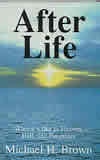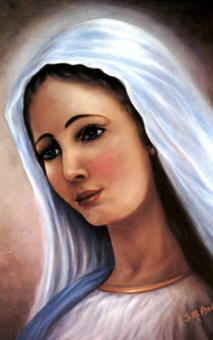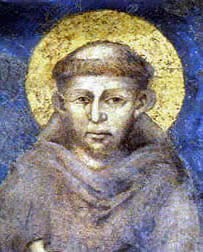|
 After
Life by
Michael Brown,
What happens when we die? How are we judged? What's it like in Heaven, Hell,
and Purgatory? Revelations, near-death accounts, and a reawakening to what
life means! A hopeful book, a serious book, one that you and loved ones
won't forget as you take a look at the final destination: eternity. There is nothing more crucial than
where we go after life and that's what this highly popular book is about:
the process of death and how instead of the "end," it is an
opening to a new and vast, never-ending reality.
CLICK
HERE After
Life by
Michael Brown,
What happens when we die? How are we judged? What's it like in Heaven, Hell,
and Purgatory? Revelations, near-death accounts, and a reawakening to what
life means! A hopeful book, a serious book, one that you and loved ones
won't forget as you take a look at the final destination: eternity. There is nothing more crucial than
where we go after life and that's what this highly popular book is about:
the process of death and how instead of the "end," it is an
opening to a new and vast, never-ending reality.
CLICK
HERE
|
|
|
|
|

__________________________________________________
ALLEGED MARIAN APPARITIONS CONTINUE IN U.S. AS
FAITHFUL FACE ISSUE OF OBEDIENCE
 On
the Feast of the Assumption, when we think so much of Mary -- and her
physical presence in Heaven -- we think too of her apparitions.
On
the Feast of the Assumption, when we think so much of Mary -- and her
physical presence in Heaven -- we think too of her apparitions.
Careful we must be to claim that this incredible
presence appears visibly -- as a corporeal apparition. Careful too we must
be not to offhandedly reject such.
Years ago, it seemed like Ohio (which, God willing, we
will visit next month) was ground zero for U.S.
apparitions. In the great upsurge during the 1980s and 1990s, that state
harbored the widest range of Marian "hotspots."
There is the Grotto of Our
Lady of Lourdes at Euclid, not far from Cleveland, which seems to be a
magnet for miracles. There was a well-known stigmatic
in Canton. There were famous locutions to an anonymous housewife (known as
the "apostolate of holy motherhood") near Steubenville (allowed to publish
messages by the bishop). There was a seer who said she saw Mary on a farm
just south of Cincinnati (technically in Kentucky), and a church in Cold
Spring where strange lights were seen during the Mass and Rosary.
There was a priest who allegedly received locutions.
There is an apparition site near Cleveland that has
drawn a large following claiming potent miracles and truly impressive
photographs (and also diocesan controversy).
Long before, there were the "Our Lady of America"
revelations in Fostoria. Controversy here, too. There is the Marian
Library: it is in Dayton, and it is the world's largest. Virtually any
major historical miracle of the Blessed Mother is on record there --
any that was recorded. (The volumes are endless.)
So widespread is fervor in
this state that even an ex-convict (near Canton, a man who had been
arrested for armed robbery) claimed to see the Virgin.
What to make of apparitions?
We believe it is better to believe than not to believe
-- to be open rather than closed -- but we
also believe that apparitions can be more deceptive (and dangerous) than
commonly perceived.
Often, we're asked why we report on some but not on
others. At times, we hear from followers who are disturbed. And we see
their point: when one receives insights or grace from a circumstance, one
wants everyone to receive the same.
When one believes in an apparition, one has trouble
understanding why others can't see the merits.
And we sympathize with such.
These are good people. By and large, they are terrific Catholics (and our
friends).
But it must also be understood that -- whatever our own
views -- we have to follow
what the Church prescribes.
For example, if a diocese has sent letters to other
bishops urging "extreme caution in giving
credence to such claims," and the United States Conference of Bishops has
added that "this group is not subject to the authority of any
Catholic entity, and should be dealt with cautiously," you can see why we
must maintain a distance.
Whatever our personal views -- and whatever our
affection for those who subscribe to any such circumstance -- it is
important to follow the discernment of the Church.
In the past century, and
especially since the late 1980s, apparitions and locutions have been
condemned, rejected, or indicated against in at least 13 states that we
can think of offhand.
We don't like to specify specific ones. Most
often, the seers are also very good people who sincerely believe they are
receiving messages. They should not be embarrassed. Recently, we have received
correspondence pertaining to the thousands who -- we are told -- have
been flocking to a village one hour south of Saigon, Viet Nam, where an apparition
has supposedly occurred and will end today, August 15, the Feast
of the Assumption.
Also recently, back in the U.S., a newspaper recounted spectacular
phenomena associated with a controversial site in Texas two decades ago -- one
deemed not to be supernatural by a diocesan commission, which was -- and
often is -- the Church's way of rejecting such.
It hurts to report on rulings that disturb the
faithful. We ourselves are not masters of discernment, and so do not stand
in judgment. But it is our duty to report.
What is one to do, for example, when an archdiocese reports -- on its
official
website, this in 2003 -- that an Archbishop
has strongly rejected an apparition and that the ruling has been upheld,
as stated on the diocesan website, by no less than "Cardinal Joseph Ratzinger, prefect of the Congregation of the Doctrine of the Faith,"
who said "that [the] archbishop is in a position to conclude the matter
with a decree that the alleged apparitions are clearly not miraculous ('constat de non
supernaturalitate'). Cardinal Ratzinger said his opinion on the
decree was made after careful consideration of the report of a three-member
theological Commission of Enquiry."
Cardinal Ratzinger, of course, is now Pope Benedict XVI.
The archbishop had said the apparition not only was
suspect, but bore aspects that were against Church doctrine and possessed
"negative elements."
In another case, a bishop sent letters to
every diocese in America asking them to halt pilgrimages to a local alleged
seer.
Our hearts break for those who sincerely
and in good faith have found refuge in such messages. But we cannot go against
the Church. No one should.
It says in the Good Book that
(whatever our personal views may be), "obedience is greater than sacrifice."
"If he refuses to listen even to the
Church," Jesus said (Matthew 18:15-20), "then treat him as you would a
Gentile or a tax collector."
So many controversies!
What does one do when one watches an
apostolate follow a locutionist and then fall apart in bitter disputes?
Tough stuff, discernment. Impossible,
without fasting. And difficult even then.
And so we love those who are open enough to
receive messages (it is better to believe) while listening to the Church, which
we will also do in the most famous case, that of Medjugorje, which the Vatican
continues to study, having accepted no judgment as yet.
When it does, we shall adhere to it
strictly. We will do so, as we have, in other cases, despite our own particular
views.
It was at Medjugorje on the Feast of the
Assumption in 1990 that an incredible light rose at noon between the spires of
the church, a light that -- when it got closer -- looked like a huge luminous
dove (but with only one flapping "wing," seen for ten minutes before it headed
for apparition hill).
Such things can help one decide, for
oneself, if something is unusual!
"Recent rumor is that just
recently a meeting was held with many bishops and the Pope, and a priest
from Rome who was there and is friends with [a community in Medjugorje] reported that
when the Pope saw the Bishop of Mostar [who has been against the
apparitions], his smile changed to a very serious stern look, and he said to him
'try building bridges rather than destroying them.' Very interesting, and he was believed to be referring to the conflict
between the Franciscans of Medjugorje and the bishop."
Interesting indeed, and equally hard to
confirm.
Let's say this: without love -- and
humility -- we receive, and discern, nothing.
[print
article]
[see also:
'Wait for Church to
decide',
John Paul II on Medjugorje, and
Remembering alleged miracle site]
[resources:
The Day Will
Come and The
Last Secret]
[see also:
Cincinnati retreat, Michael Brown, September 20:
prophecy, afterlife, miracles]
[picture of Mary at top left was drawn by Precious Blood nun after
visit to Medjugorje]
E-mail this
link directly

Return
to home page www.spiritdaily.com
 After
Life by
Michael Brown,
What happens when we die? How are we judged? What's it like in Heaven, Hell,
and Purgatory? Revelations, near-death accounts, and a reawakening to what
life means! A hopeful book, a serious book, one that you and loved ones
won't forget as you take a look at the final destination: eternity. There is nothing more crucial than
where we go after life and that's what this highly popular book is about:
the process of death and how instead of the "end," it is an
opening to a new and vast, never-ending reality.
CLICK
HERE
After
Life by
Michael Brown,
What happens when we die? How are we judged? What's it like in Heaven, Hell,
and Purgatory? Revelations, near-death accounts, and a reawakening to what
life means! A hopeful book, a serious book, one that you and loved ones
won't forget as you take a look at the final destination: eternity. There is nothing more crucial than
where we go after life and that's what this highly popular book is about:
the process of death and how instead of the "end," it is an
opening to a new and vast, never-ending reality.
CLICK
HERE

